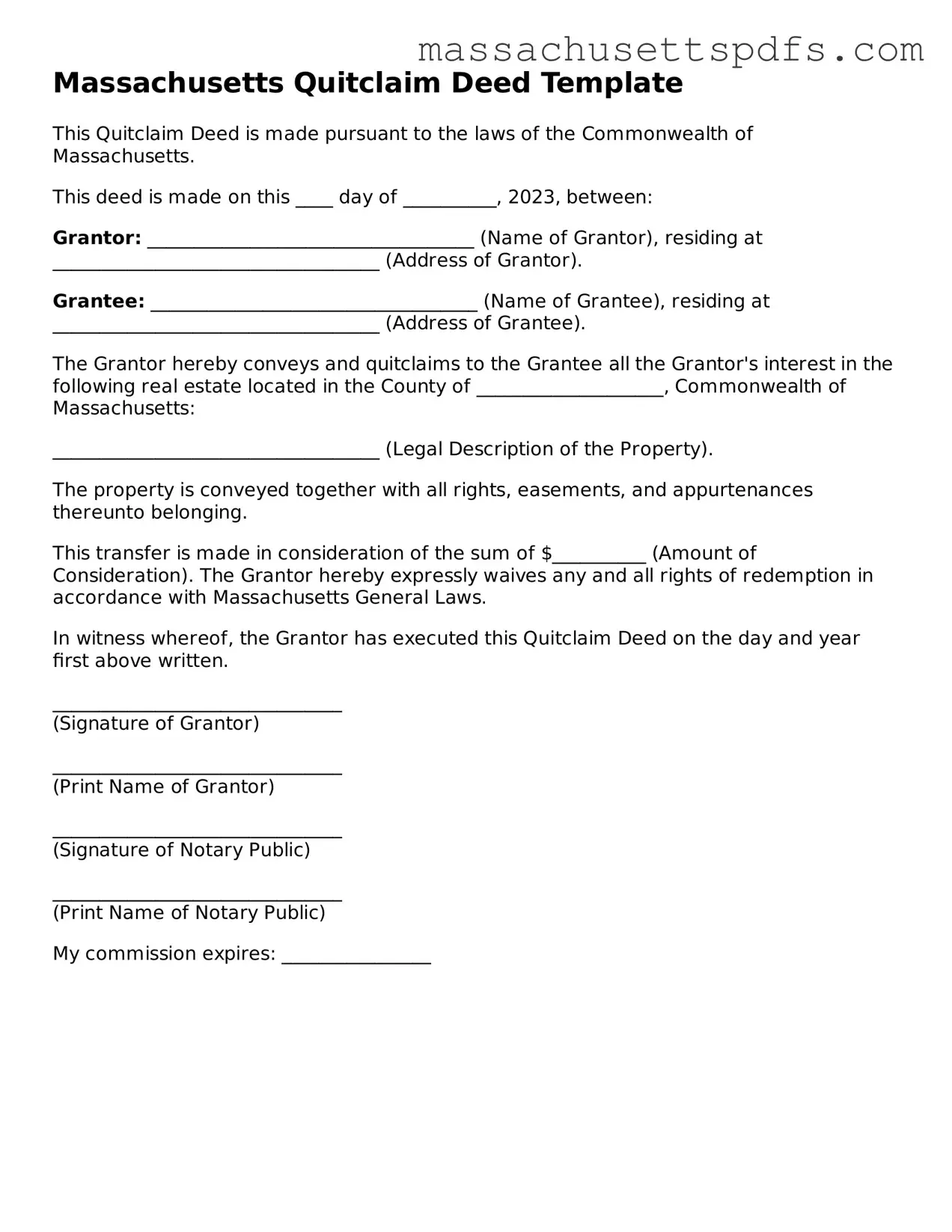Attorney-Approved Massachusetts Quitclaim Deed Document
A Massachusetts Quitclaim Deed is a legal document used to transfer ownership of real estate from one party to another without any warranties or guarantees about the property's title. This form is often utilized in situations where the parties know each other well, such as family transfers or between friends. If you're ready to complete your property transfer, fill out the form by clicking the button below.
Launch Editor Here
